What’s The Lowest Temperature a Human Can Survive?
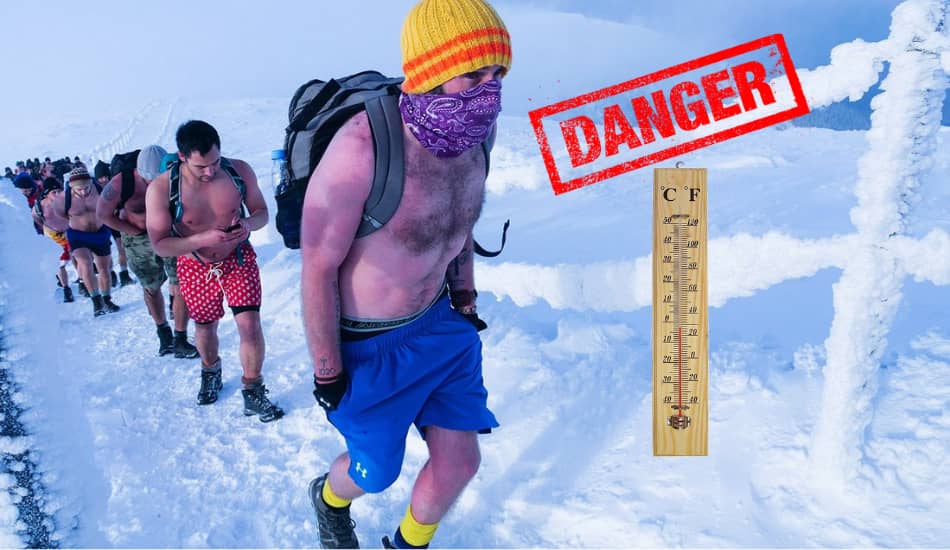
Have you ever been curious about how low the temperature needs to drop before it becomes dangerous for humans to survive? Such questions cross my mind whenever I can’t stop shivering. Especially during the cold winter.
It’s shocking to learn that the temperature doesn’t need to be at “freezing point” for it to be deadly. Even a relatively chilly evening could push our bodies beyond their survival capabilities. So, what’s the lowest temperature a human can survive? In this article, we’ll answer that. So, let’s start!
What’s the lowest temperature a human can survive? The lowest temperature at which a human can survive is around -32°C (-26°F). However, this varies based on individual resilience. Hypothermia occurs when the body’s internal temperature falls below 95°F (35 °C). The situation could be fatal if the internal body temperature dips below 70°F (21 °C).
Most of the limits that the human body can survive are really surprising, but most individuals start to occur hypothermia at -32°C (-26°F). We all know that we can survive 3 days without drinking water and around 3 weeks without any food, but many of us don’t know how the human body acts at low temperatures.
Here is a table view that shows how our body behaves at different (low) temperatures:
| Body Temperature (°F) | Stage | Symptoms |
|---|---|---|
| 95-98.6 °F | Normal | None |
| 91-95 °F | Mild Hypothermia | Shivering, weakness, confusion |
| 82-91 °F | Moderate Hypothermia | Memory loss, unconsciousness |
| 70-82 °F | Severe Hypothermia | Unconsciousness, heartbeat/breathing may stop |
| Below 70 °F | Critical | High risk of death |
Now that we know what temperature can be fatal for a person and when we can freeze to death, we will go through more details that are very important. So, let’s start!
Table of Contents
Factors That Affect Cold Tolerance
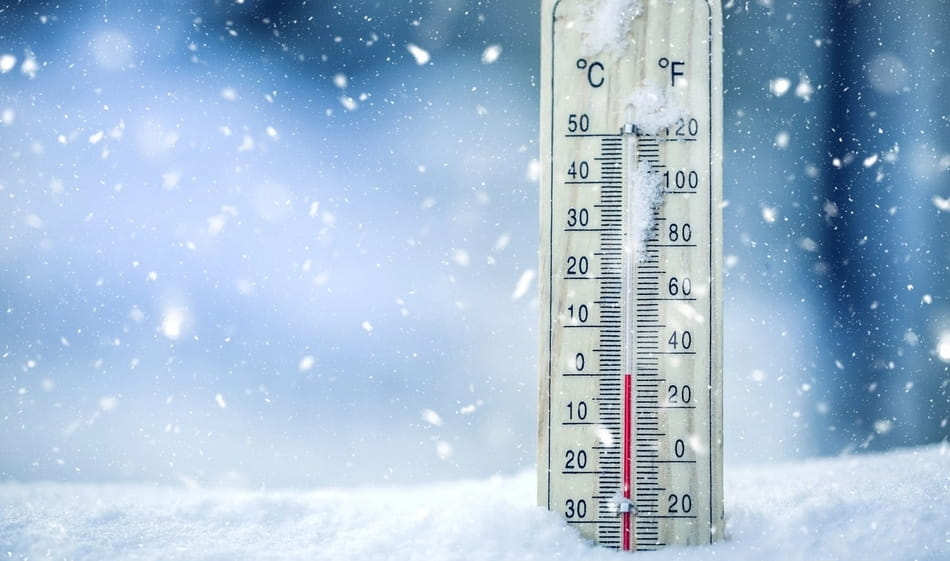
What makes certain people tolerate the cold better than others? Can the reason be that they wear more layers of clothing or simply have more resistant bodies to the cold? Let’s examine some scientific elements contributing to our capacity to handle the cold.
- Body structure: Many people don’t know, but body fat serves as a natural warming layer for our bodies. It’s true! Individuals with more body fat can handle lower temperatures more comfortably, as the fat provides insulation.
- Age and gender: Women and older individuals are generally less resistant to cold than younger men. This is often linked to body structure, as women usually have fewer muscles and more body fat than men, which increases their susceptibility to cold.
- Thick Clothes: What an individual wears is very important. Clothes are the first barrier against low temperatures. If you wear an insulating wool or down, you will keep your body temperature better.
- Higher Metabolism: Keeping active produces body heat, helping us stay warm. Individuals with a faster metabolic rate can generate body heat quicker and endure colder climates for extended periods.
Related Article: How Warm Is 600 Fill Down? Explained
What’s The Lowest Temperature At Wich Human Can Survive?
In short, the lowest temperature a person can survive is approximately -32°C (-26°F). Temperatures beyond this point can induce hypothermia, a dangerous situation where your body loses heat quicker than it can generate it. However, this is not always the case because each individual is different.
Determining the exact temperature at which a human can freeze to death is quite tricky. How each person reacts to low temperatures varies significantly. The outcome depends on the individual, the surrounding temperature, moisture content, and how long it is exposed to freezing conditions.
How quickly the temperature deviates from what is considered normal also plays a role. Our bodies typically make minor adjustments to cope with colder conditions. For instance, our bodies will start to constrict blood vessels to redirect warm blood to vital organs.
The average temperature at which a person freezes to death is minus 70°F (-56.6°C). The time it takes for this to happen largely depends on how long you are exposed to the cold and your physical fitness level.
Generally, if the temperature falls below -40 degrees, there’s a risk of freezing to death. In the next section, we’ll cover that in more detail.
If you want to learn more, watch this interesting youtube video:
Extreme Cold Is Worse Than Heat
If you didn’t know, extreme cold is far more deadly than extreme heat. It may be surprising to learn that the likelihood of dying due to freezing is around 15 times greater than from extreme heat.
Around the World, people are freezing to death at a much higher percentage than they are dying from the heat. Normally, the human body maintains a core temperature of around 98.7°F (37°C).
Hypothermia starts to set in when the body’s temperature falls below 95°F (35°C). Vital organs such as the heart, brain, and lungs start to struggle at this point.
Once the body temperature goes below 91°F (32.7°C), amnesia may occur, and recovery without medical assistance becomes improbable. At a core temperature of 82°F (27.7°C), unconsciousness sets in, and the average fatal threshold is around 70°F (21.1°C). Now you know that this is the lowest temperature a Human can survive.
This might sound easy to understand, but predicting when a person will reach these temperatures is a challenge. It’s extremely difficult to gauge the specific temperatures at which an individual might freeze to death.
A person that is in good shape may survive a night with temperatures as low as 20°F (-6.6°C) without shelter, whereas an old woman might not survive a 50°F (10°C) night, even in bed.
Adding factors like water and wind complicates the situation even further. That’s why hypothermia should always be taken seriously, and finding warm shelter should be a priority.
At What Point Does a Person Freeze to Death?
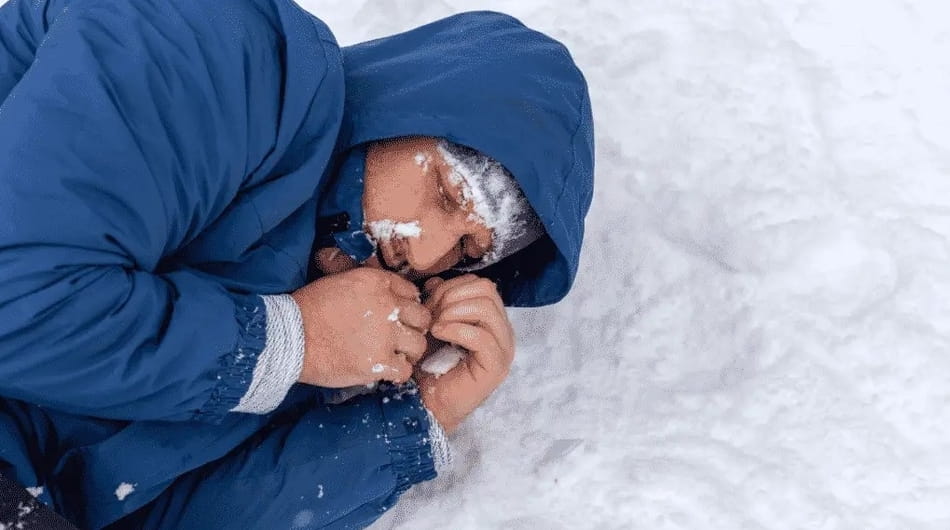
Freezing to death happens when the core body temperature begins to fall. Usually, our internal body temperature stays around 98.6°F (37°C). Hypothermia, however, can occur when this temperature drops below 95°F (35°C).
You don’t have to be in a freezing environment to experience hypothermia. In fact, hypothermia can set in at temperatures between 30°F and 50°F (-1 to 10°C). Hypothermia at such mild temperatures is relatively rare, but it can occur, especially if you’re exposed for a lengthy period without enough insulation.
When someone is wet, the risk of hypothermia can be much higher, even at these temperatures. The human body loses heat much quicker in water than in air.
Anyone who’s jumped into the swimming pool on a cool day can tell the difference. Even if it’s 70°F outside, you could shiver after emerging from the water.
Each Person Has Different Tolerance To Low Temperatures
Typically, an individual would freeze to death when its internal body temperature goes to 70°F (21.1°C), the point at which vital organs begin to fail and incur irreparable damage.
However, some people have survived this low temperature despite their body temperatures dropping below this level. Even though they are essentially in a state of coma and can’t move, they somehow pull through.
There are even cases where people found buried in snow had a body temperature of 60°F (15.5°C), and managed to survive. Although this is rare, and less than 0.1% of people can survive, such miracles have happened. This proves that every person and his body reacts differently to low temperatures.
How Do You Survive Subzero Temperatures?
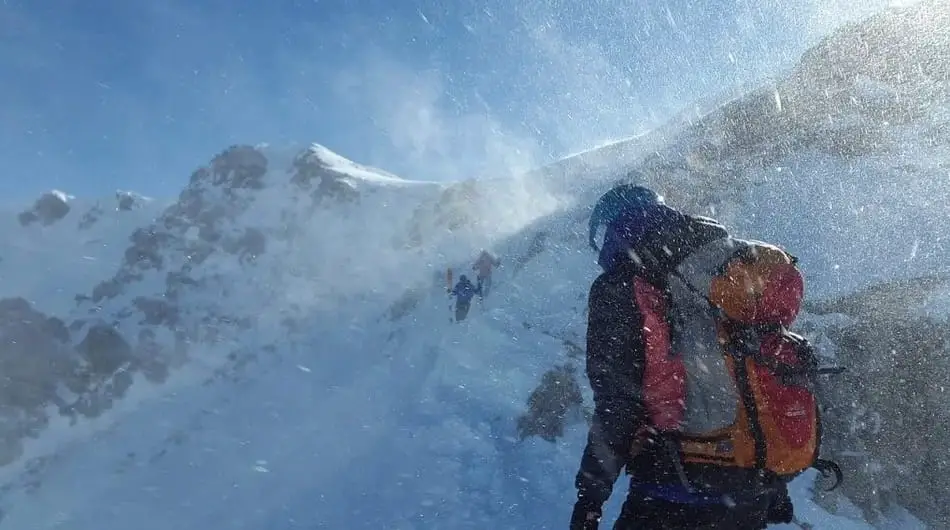
Survival becomes an entirely different challenge when the temperature is below zero. When it drops below minus 20°F (-6.6°C), an individual can freeze to death within 10 to 20 minutes. When it’s even colder, for example, -40 degrees, hypothermia can strike in less than five minutes.
Also, a person doesn’t need to be outside in freezing temperatures to fall victim to hypothermia. You could be at risk even in 50°F (10°C) weather, especially if someone is wet or there’s a significant wind outside. The human body loses heat around 20 times faster when it is in water, and a cold wind speeds up heat loss further.
According to statistics, around 90% of deaths occur in cold water. Therefore, it’s important to dress appropriately for cold conditions and make every effort not to get wet when you’re outdoors. The right cold-weather gear can extend survival time, but ultimately, the cold will overpower.
Stages of Hypothermia

Initial signs of hypothermia, which start when the body temperature drops to around 95°F (35°C), can seem relatively harmless. You might experience shivering, feel weak, and even be slightly confused. However, if body temperature falls further, it can be dangerous. Here are the phases of hypothermia:
- Below 95°F (35°C): Expect to shiver, feel weakness, and possibly experience minor confusion.
- Below 91°F (32.7°C): The human body begins to malfunction, with amnesia setting in. All survival instincts can be forgotten.
- Below 82°F (27.7°C): Unconsciousness takes over. Without professional medical assistance within a few minutes, the risk of death significantly increases.
- Below 70°F (21.1°C): When human body temperature falls below 70 degrees, survival becomes almost improbable. Even though there are known cases of adults pulling through, severe hypothermia would have set in.
Now you see what are the lowest temperature a Human can survive.
Signs of Hypothermia
Factors such as lack of food, dehydration, and exhaustion increase the risk of hypothermia. The impact of cold weather on individuals varies. One person might suffer from hypothermia in a group, while the others may not. It’s crucial to spot the signs early and help the affected person warm up.
Early Indicators of Hypothermia
- Muscle cramps
- Feeling cold
- Overwhelming tiredness
- Involuntary shivering
- Disorientation and inability to understand verbal instructions
Dangerous Indicators of Hypothermia
- Tripping and falling
- Incoherent speech
- Sudden fits of anger
- Mental confusion and difficulty to focus
- Entering a coma and potential death
Human Body Can Withstand Extreme Cold Temperatures
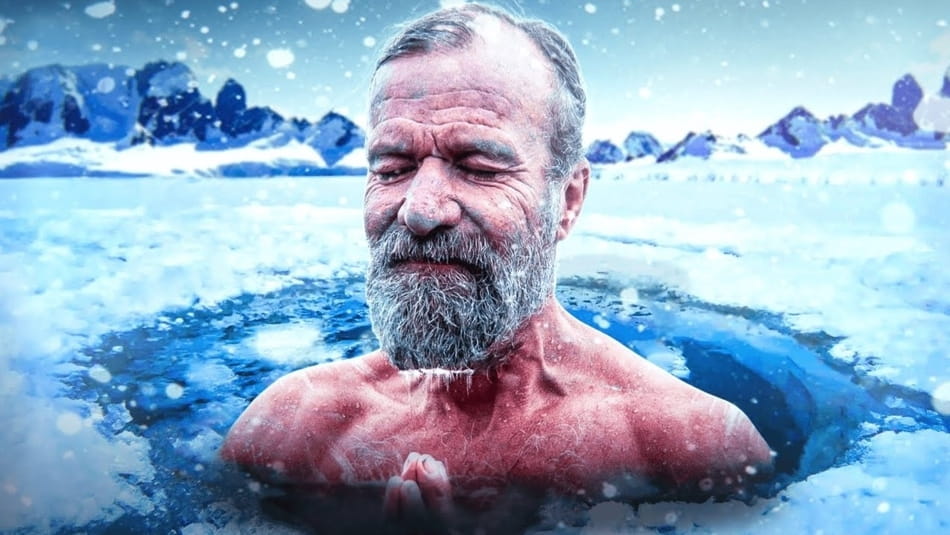
As soon as frosty air brushes against your face, your body initiates a self-insulation process known as vasoconstriction. This process diverts blood flow from our skin and peripheral limbs toward the internal organs. This mechanism safeguards our crucial organs during cold spells.
Hence, our fingers and toes are usually the first to feel cold. While you can survive without a few digits, harm to your vital organs can be fatal. Emerging from an ice age, the human body has developed incredible resilience to chilly conditions. We possess several tactics to shield our essential organs from the harsh cold.
In addition, your body starts shivering in an attempt to generate warmth. This additional body movement aids in increasing body temperature. On the other hand, shivering may seem not good, but it shows that our body is still actively resisting the cold.
Here is an interesting video with Superhuman Wim Hof and how he handles ice:
Cold Water Speeds Up Hypothermia
Hypothermia most often occurs when the body is in cold water. If you go camping during the winter and fall into the water, it can be very dangerous. Water drains heat from our body fast, so immediate action is important.
If this happens, get out of the water as quickly as possible, promptly change into dry clothes and find shelter. Hypothermia may be on the horizon if teeth start to chatter and shivering sets in.
Dress in warm, dry clothing and attempt to raise your body temperature. Curling up in the sleeping bag to retain body heat effectively raises the internal temperature.
Related Article: How To Heat a Camper Without Electricity? 6 Best Ways
How Do Deal With Hypothermia?
When dealing with hypothermia, it’s crucial to promptly move the person to a sheltered location. This could be a log cabin or a tent where is no wind present. Substitute any wet clothes for dry ones and use blankets for added warmth.
Make a fire and provide them with a hot beverage filled with sugar. The body can rapidly burn sugar, thereby raising the internal body temperature. Make use of emergency food supplies to boost blood sugar levels.
However, immediate action is important if you’re by yourself and begin to notice shivering and other hypothermia signs. Seek shelter from the wind or rain and remove your wet clothing.
Utilize all your emergency resources and strive to raise your body temperature. Send a distress signal as soon as possible and, if you can, start a fire.
Remember that you might experience feelings of despondency and lack of motivation, but it’s critical to push past these. While you’re still capable, call for assistance and start a fire.
Tips for Cold Weather: How to Stay Safe and Warm
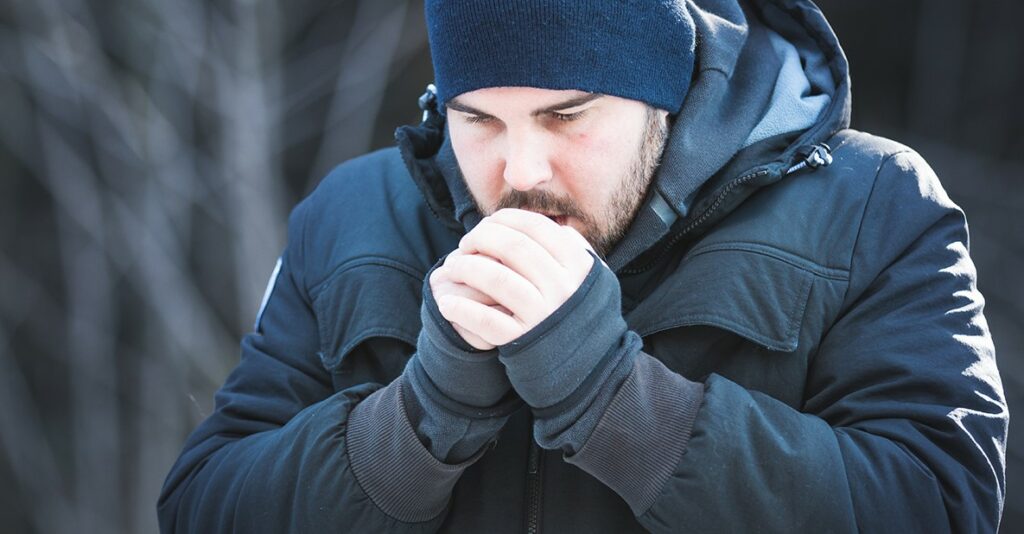
Going on a winter trip can be thrilling, but it’s vital to ensure that you take the appropriate steps to stay safe and warm. This section will provide some handy guidelines for surviving in cold weather.
1. Dressing Appropriately
Dressing suitably is a very important factor when you are out in the cold. The key here is to dress in layers! Begin with a base layer that can draw moisture away and keep you dry. Afterward, add a thermal layer to retain warmth and finish it off with an outer layer that is resistant to water and wind.
2. Staying Dry and Hydrated
One of the most important things during cold weather is to stay dry and hydrated. Wet clothing can speed up heat loss and increase the risk of hypothermia. Therefore, it’s worth considering bringing additional layers of clothing to change into if necessary. Likewise, keeping well-hydrated is equally important when enduring cold weather.
3. Building a Shelter
A shelter is a great way to protect yourself, helping to minimize heat loss and maintain warmth. If you are in a cold environment, the first thing you should do is build a shelter. You can use materials in the forest, such as twigs and branches that you find on the ground.
4. Starting a Fire
A fire is a crucial component of surviving in cold weather. It can offer heat and light, aid in drying wet clothes, and serve as a signal for rescuers. Therefore, be sure always to carry the necessary tools to kindle a fire if you plan on spending time in the cold outdoors.
Final Thoughts
Although winter is a beautiful time of the year, it can also pose a risk to your health if you’re unprepared. The upside is that just a few easy-to-follow steps can help guarantee your safety and warmth throughout the cold period. As we can see in this article, the lowest temperature at which humans can survive is around -32°C (-26°F).
Low temperatures should be avoided because it is dangerous for our health. Whether you’re setting off for some skiing, embarking on a winter trail, or simply relishing in the season’s charm, always prioritize safety and warmth. With some prior planning and a healthy dose of practicality, you can thoroughly enjoy the winter season and all the delightful experiences it provides.

